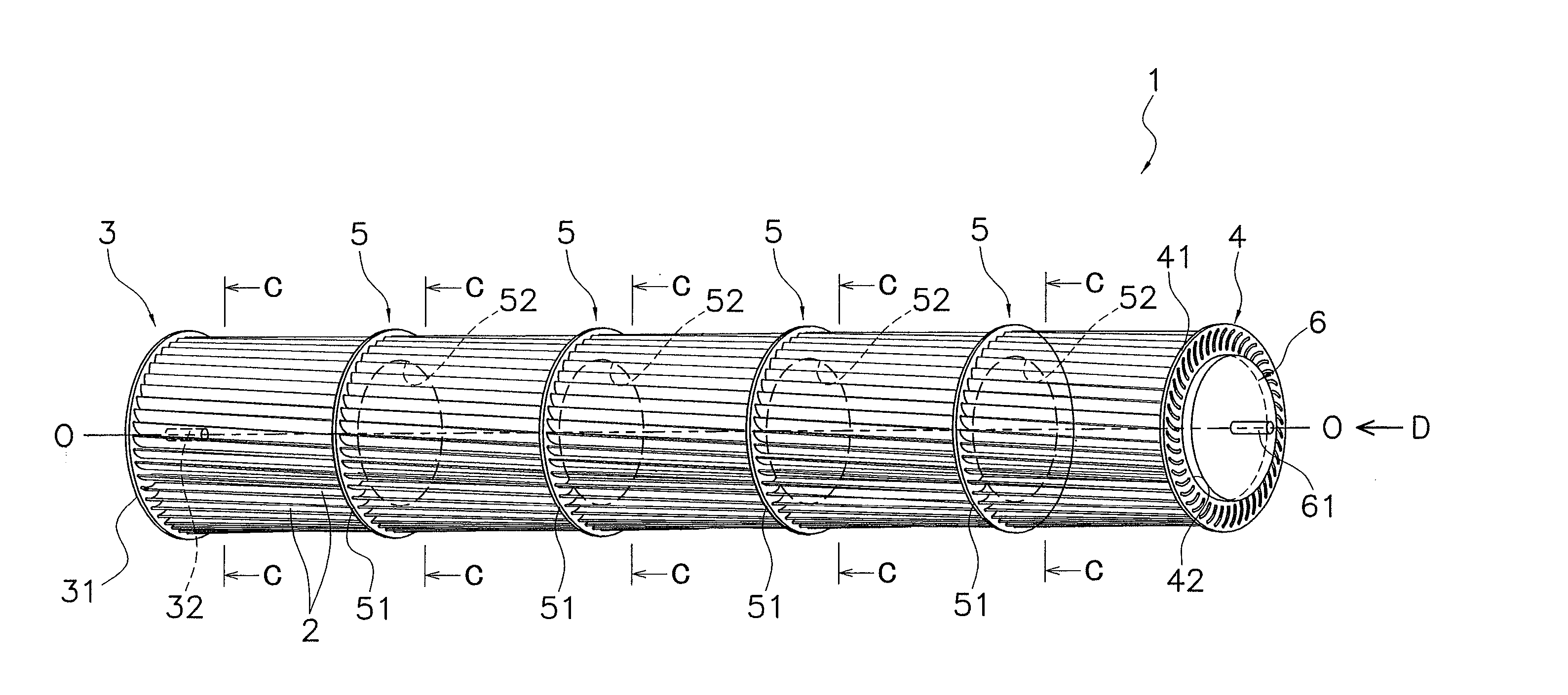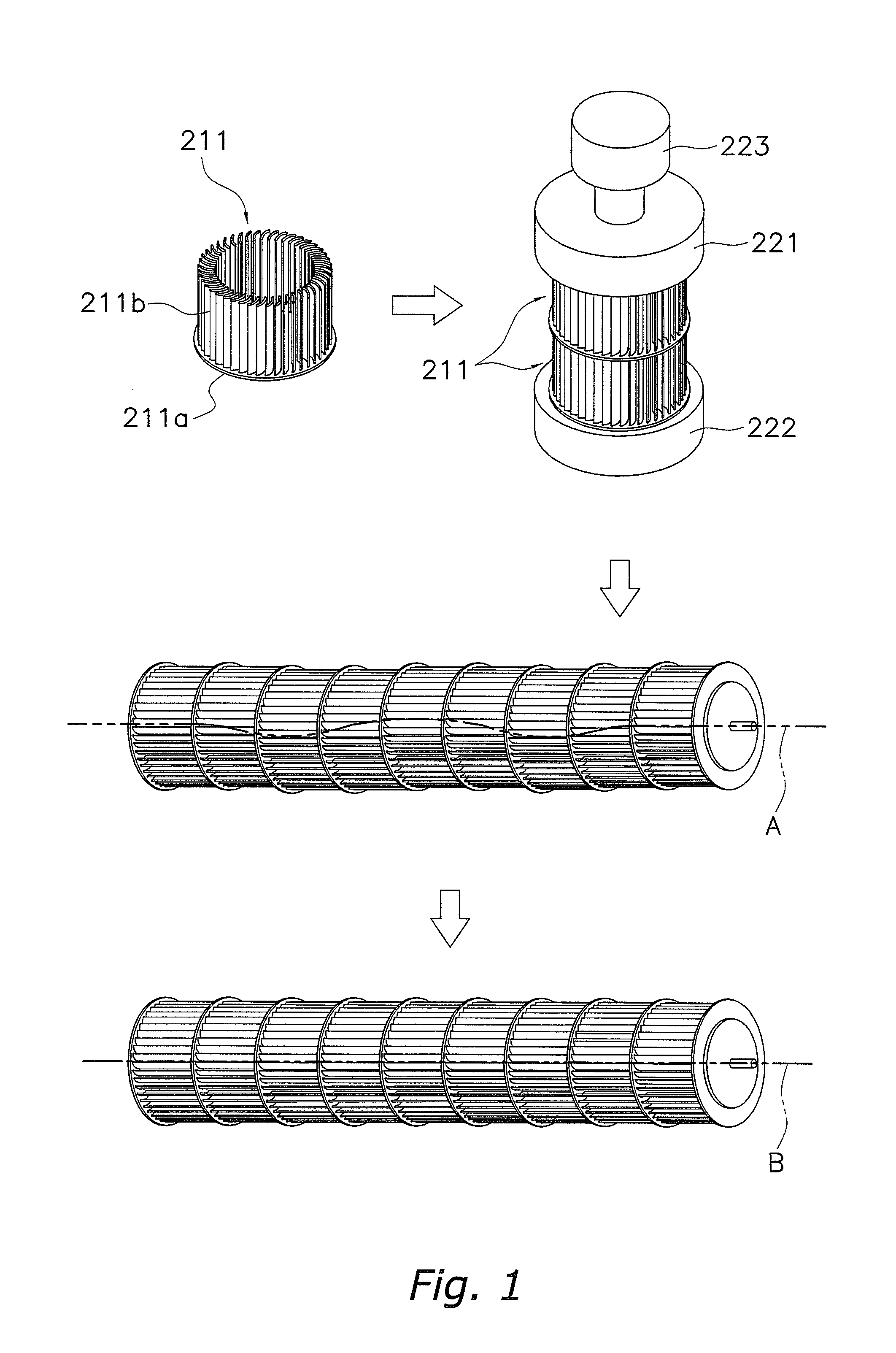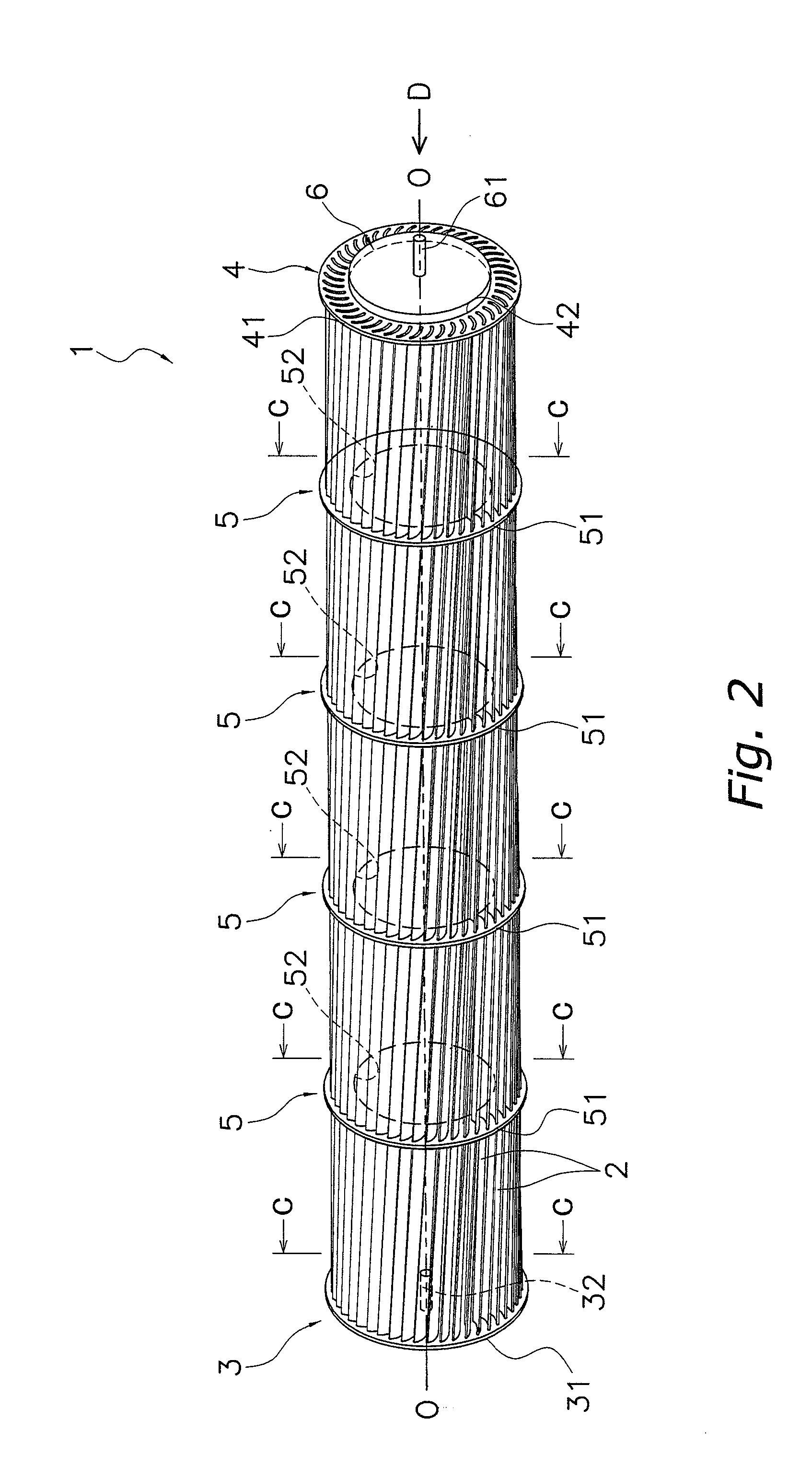Cross-flow fan made of resin and method of manufacturing the same
a cross-flow fan and resin technology, applied in the direction of wind motor components, non-positive displacement fluid engines, liquid fuel engine components, etc., can solve the problems of high manufacturing cost, inability to meet the requirements of air blowing performance, and structure suitable for improving air blowing performance, so as to reduce the number of portions
- Summary
- Abstract
- Description
- Claims
- Application Information
AI Technical Summary
Benefits of technology
Problems solved by technology
Method used
Image
Examples
first embodiment
(1) Structure of a Resin Cross Flow Fan
[0059]FIG. 2 shows an external perspective view of a resin cross flow fan 1 according to a first embodiment of the present invention. Note that line O-O is a rotation axis line of the resin cross flow fan 1 (hereinafter line O-O is referred to as “rotation axis”).
[0060]The resin cross flow fan 1 mainly includes a plurality of blades 2, a first end plate 3, a second end plate 4, and support plates 5.
[0061]The plurality of blades 2 are long resin members annually disposed about the rotation axis and extending the entire length of the resin cross flow fan 1. Each blade 2 has a cross section having a generally circular arc shape. In addition, each blade 2 is disposed inclined at predetermined angle instead of in parallel to the rotation axis, in order to improve air blowing performance including noise reduction and the like. In addition, an ABS resin and the like may be used as the material constituting the blades 2.
[0062]The first end plate 3 is a...
second embodiment
(1) Structure of Resin Cross Flow Fan
[0089]FIG. 14 shows an external perspective view of a resin cross flow fan 101 according to a second embodiment of the present invention. As is the case with the resin cross flow fan 1 in the first embodiment, the resin cross flow fan 101 according to the second embodiment of the present invention is a fan that uses the plurality of long blades 2 that extend the entire length of the resin cross flow fan 101 and mainly includes the plurality of blades 2, a first end plate 103, a second end plate 104, and support plates 105. Note that the resin cross flow fan 101 has a structure similar to that of the resin cross flow fan 1 except for that the plates 103, 104, and 105 are different from the plates 3, 4, and 5 of the resin cross flow fan 1 in the first embodiment. Therefore, descriptions are given below with respect to the structures of the plates 103, 104, and 105.
[0090]As shown in FIGS. 15 and 16, as is the case with the first end plate 3 of the r...
example 1
(4) Modified Example 1
[0108]With the above described resin cross flow fan 101, as shown in FIGS. 16, 18, and 20, the portions 35a, 45a, and 55a of the pressing portions 35, 45, and 55, which come into contact with the concave side of the blades 2, have a slightly pointed shape, and the contact therebetween is substantially a line contact. However, they may be configured to extend along the concave side of the blades 2 such that the contact therebetween is a planer contact. More specifically, the support plates 105 are described by way of example (descriptions of the plates 103 and 104 are omitted). As shown in FIG. 22, the portions 55a of the pressing portions 55 are configured in a flat shape that extends along the concave side of the blades 2. This enables a further improvement of the close contact condition between the blades 2 and the projecting portions 34, 44, and 54 by the pressing portions 35, 45, and 55.
PUM
| Property | Measurement | Unit |
|---|---|---|
| Thickness | aaaaa | aaaaa |
| Transmittivity | aaaaa | aaaaa |
Abstract
Description
Claims
Application Information
 Login to View More
Login to View More - R&D
- Intellectual Property
- Life Sciences
- Materials
- Tech Scout
- Unparalleled Data Quality
- Higher Quality Content
- 60% Fewer Hallucinations
Browse by: Latest US Patents, China's latest patents, Technical Efficacy Thesaurus, Application Domain, Technology Topic, Popular Technical Reports.
© 2025 PatSnap. All rights reserved.Legal|Privacy policy|Modern Slavery Act Transparency Statement|Sitemap|About US| Contact US: help@patsnap.com



